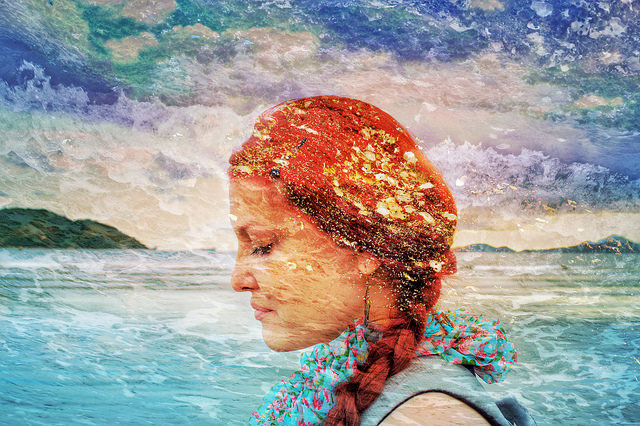For too long, I felt invisible.
There but not really there.
An outline of a body that wasn’t seen by many, filled with emotions but no texture.
My teachers, peers, and neighbors would look at me, then through me, sometimes walking right into me until their shoulders smacked against mine, causing my knees to buckle back and my feet to stumble. I would be left standing, befuddled, taken aback. Sometimes I’d speak to their shadow, just to hear my words clunk against the floor, proof that I existed, verifying that I wasn’t a dream after all.
Call it depression, call it a void, call it whatever you will. I call it invisibility, a feeling of being unknown, unseen, participating in a world that doesn’t participate back.
I know others have felt this way too. Online, it comes out as confessionals, rants and pleas emanating from the dark spaces of the Internet to hear me. We reach out, hoping that someone will notice us and extend a hand back. That our opinions, ideas and emotions will be validated, that we will be consoled and appreciated. That we will be proven to exist.
We text and comment and post. And then when a message goes unanswered or unliked, I’ll see a single question, “Anybody out there?”
Offline, as well, we try to appeal and befriend, to color in that space within us that feels empty or dull. Through our clothes, we seduce. Through alcohol or drugs, we release. Through risk, we hope to fall into place.
I waded too long in this ocean of invisibility and searched too hard for the parts that made me whole. As if the rest of me was waiting to be found in a friend’s backyard party, within the frames of a degree or in a new and enticing job prospect.
But I never found it elsewhere. I found it within me and in the process, here is what I’ve learned.
1. Our words, our parts and characteristics make us whole.
We can’t search for our worth in others’ praise, encouragement and words. In their facial expressions and body language, the lull of their voice or tip of their smile. We cannot rely on anyone else to paint the picture of us.
We are who we are. What we perceive as emptiness might be a weakness we despise, a part of our body that we can’t accept or a characteristic we won’t admit is there. Once we strip away our self-judgment and accept our strengths as well as our weaknesses, then we can stop hiding from who we are. We can start filling in the lines with our vulnerabilities, intricacies and potential, start feeling the fullness and depth of us. No matter what anyone else says or does, no matter what life brings us, we need to realize that we are worthy just as we are.
2. Visible dreams make for a visible soul.
We may feel incomplete, in part, because we aren’t recognizing and nurturing our dreams. What feels like a lost part of ourselves is actually that dream we aren’t recognizing and pursuing. We need to connect the dots of who we are, what we want and how we’re going to get it.
In this chaotic, crowded and dense world it’s so easy to lose ourselves, to get distracted and push our needs aside. But taking the time to sit down and ask the hard questions of “who am I?” “what do I value?” and “what do I really want out of life?” is so critical to ensuring that we are living authentically, that we are bringing our full selves to each day.
3. Completeness comes with presence and patience.
We exist in a moving world, an ever-changing sea of complex relationships and transient circumstance. We do what we can to feel stable in this landscape of too many people, to be felt by those we love and to feel in control of the steps we take. Oftentimes, we are so busy running ahead that we don’t pause and lay down our feet in the present moment.
Being mindful and in tune with our emotions, our physical sensations and our environment is so critical to uncovering the veil of our true selves. When we look deeply into ourselves, we may uncover what we never knew was there. We may be prompted to dig deeper to understand emotional responses we don’t understand or a thought pattern that is harming us. The answers to us are there; we just need to find them. This takes presence and patience and above all acceptance at what we find, the space and color and beauty that is in us, that which makes us whole.
Author: Amanda Richardson
Editor: Catherine Monkman
Image: jeronimo sanz/Flickr












Read 1 comment and reply